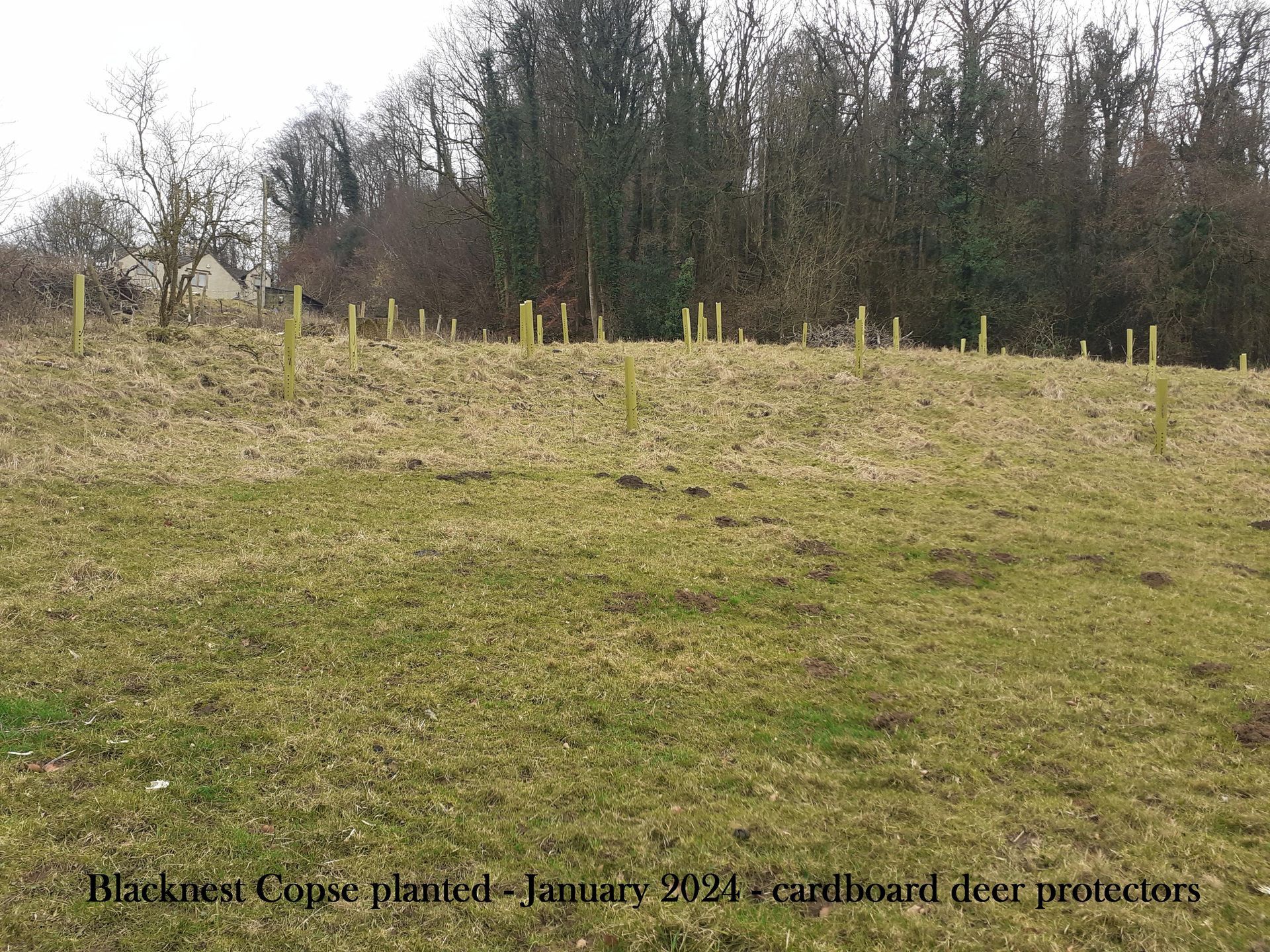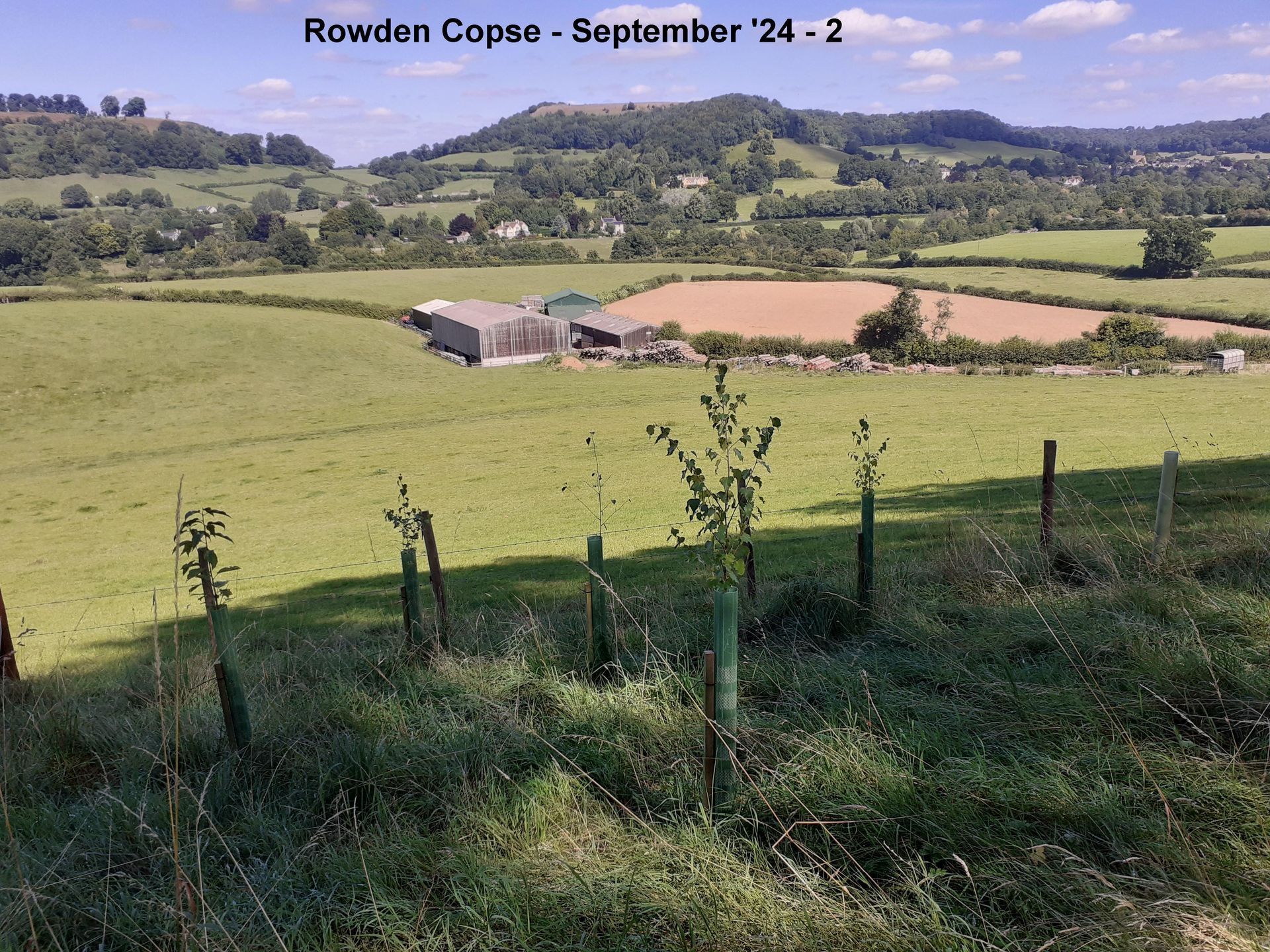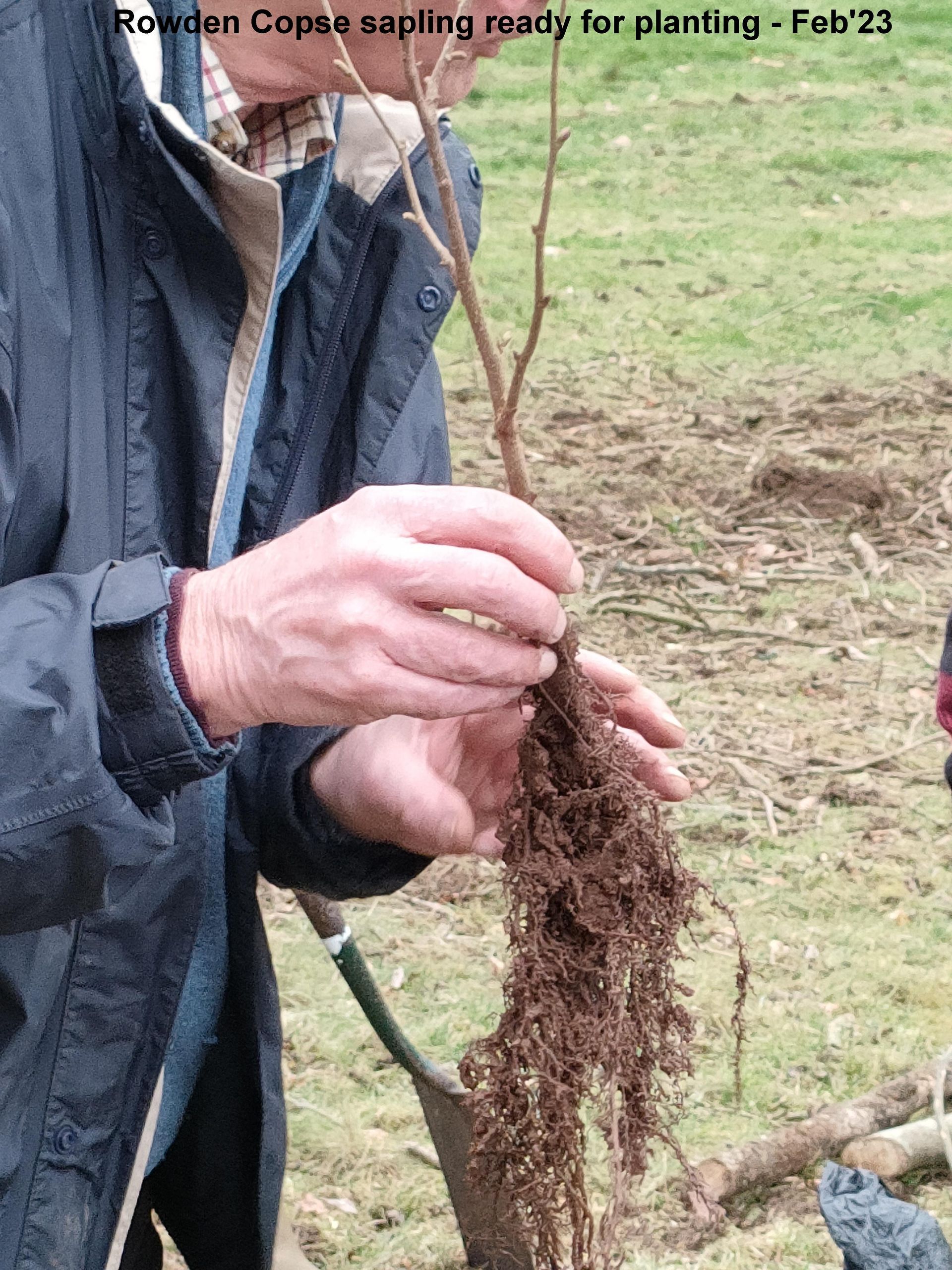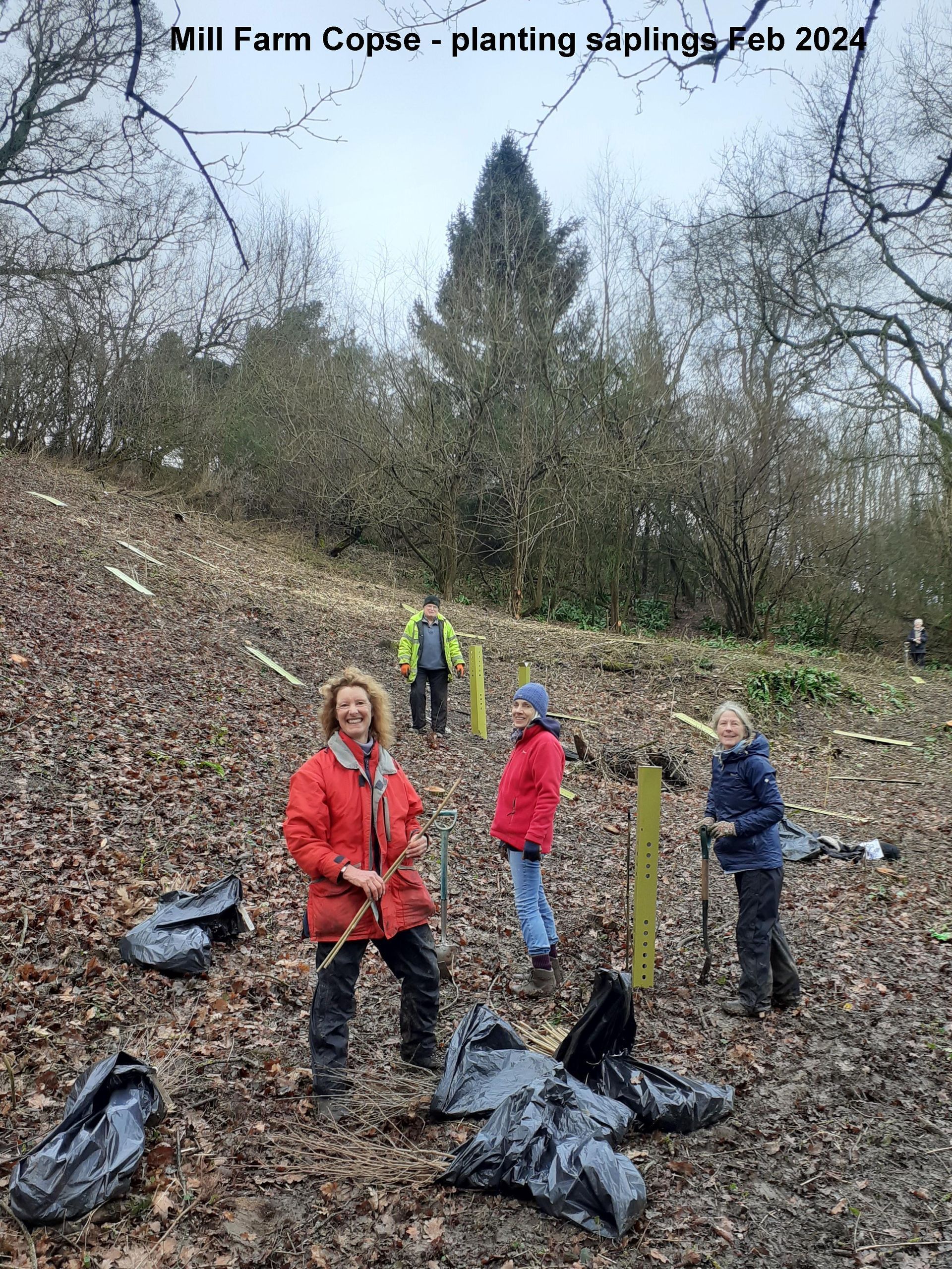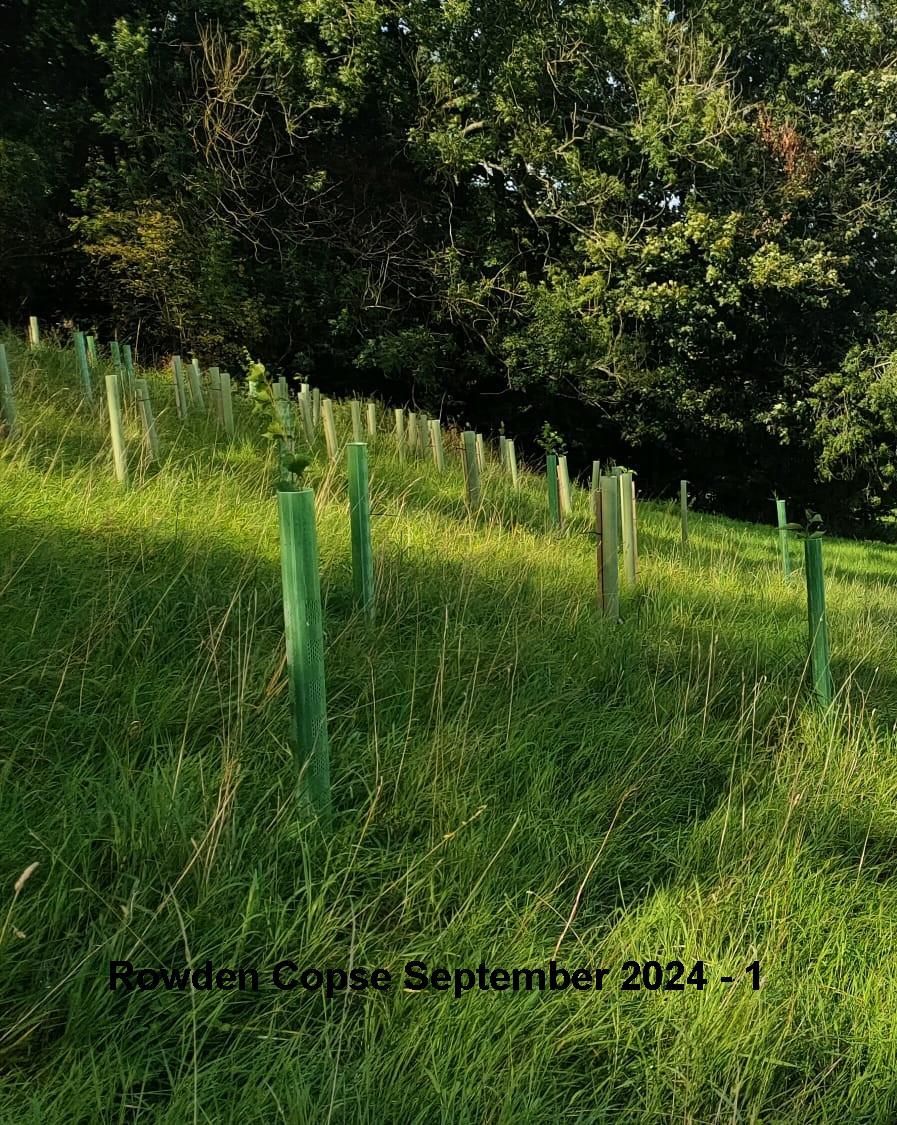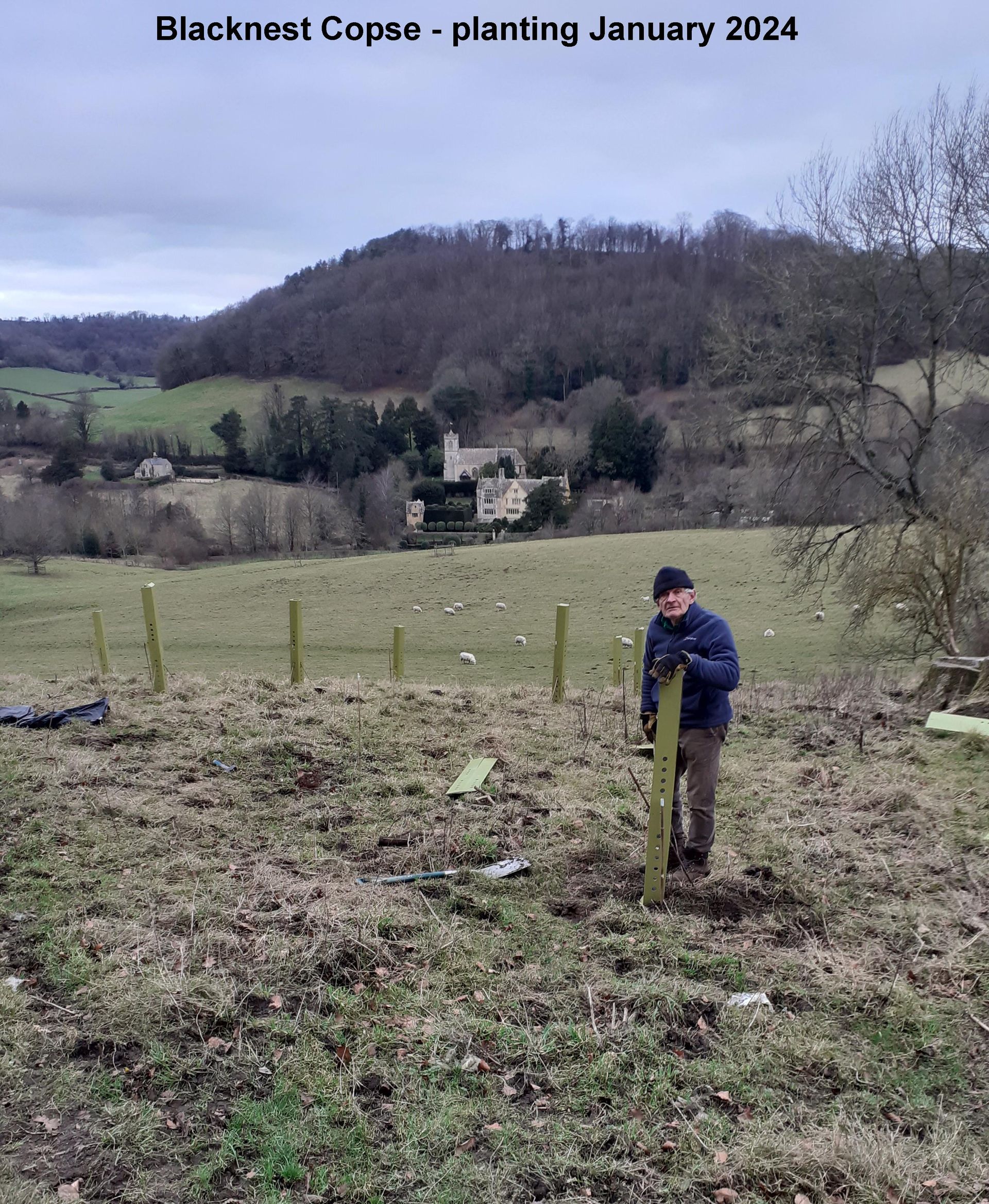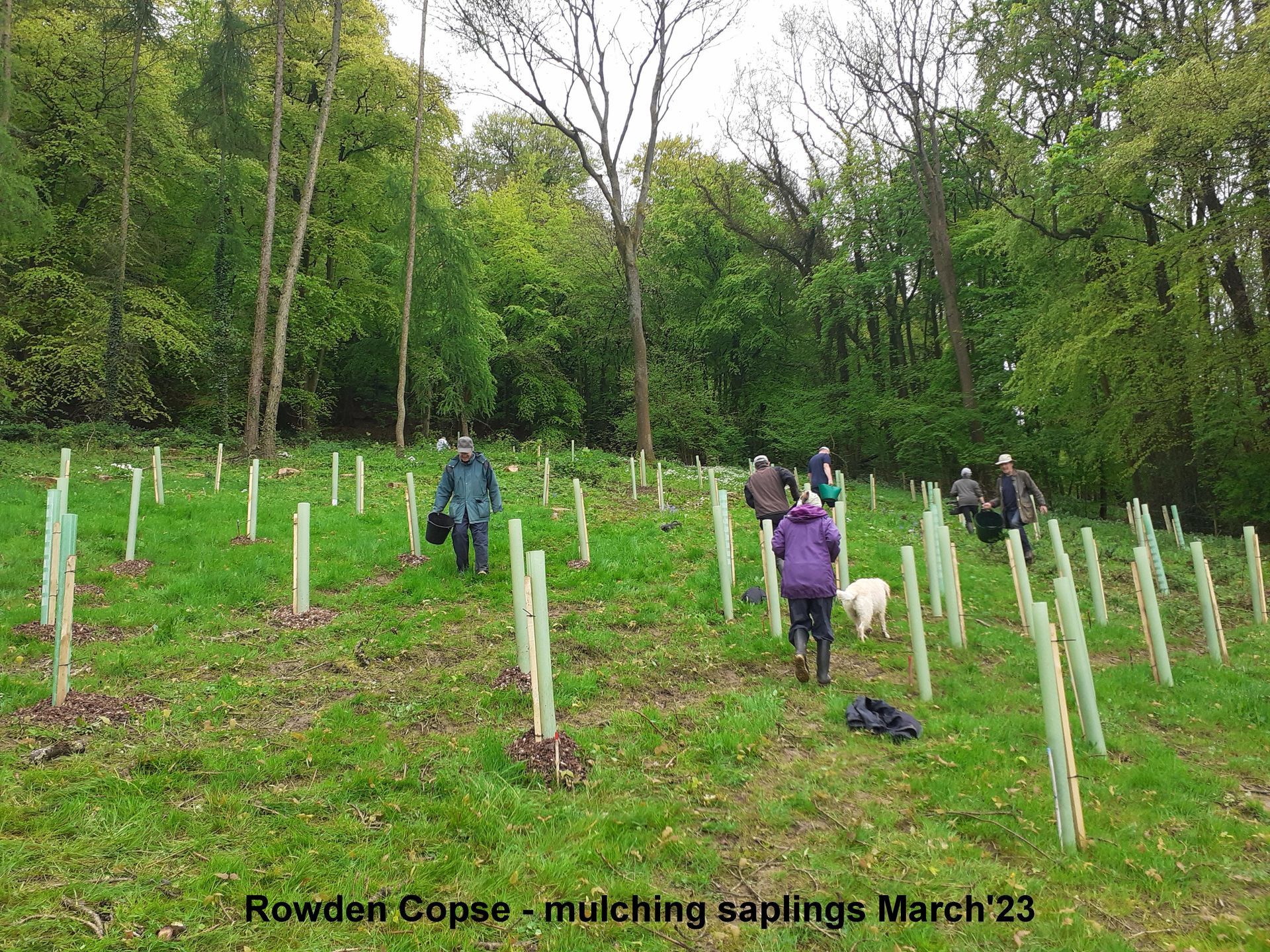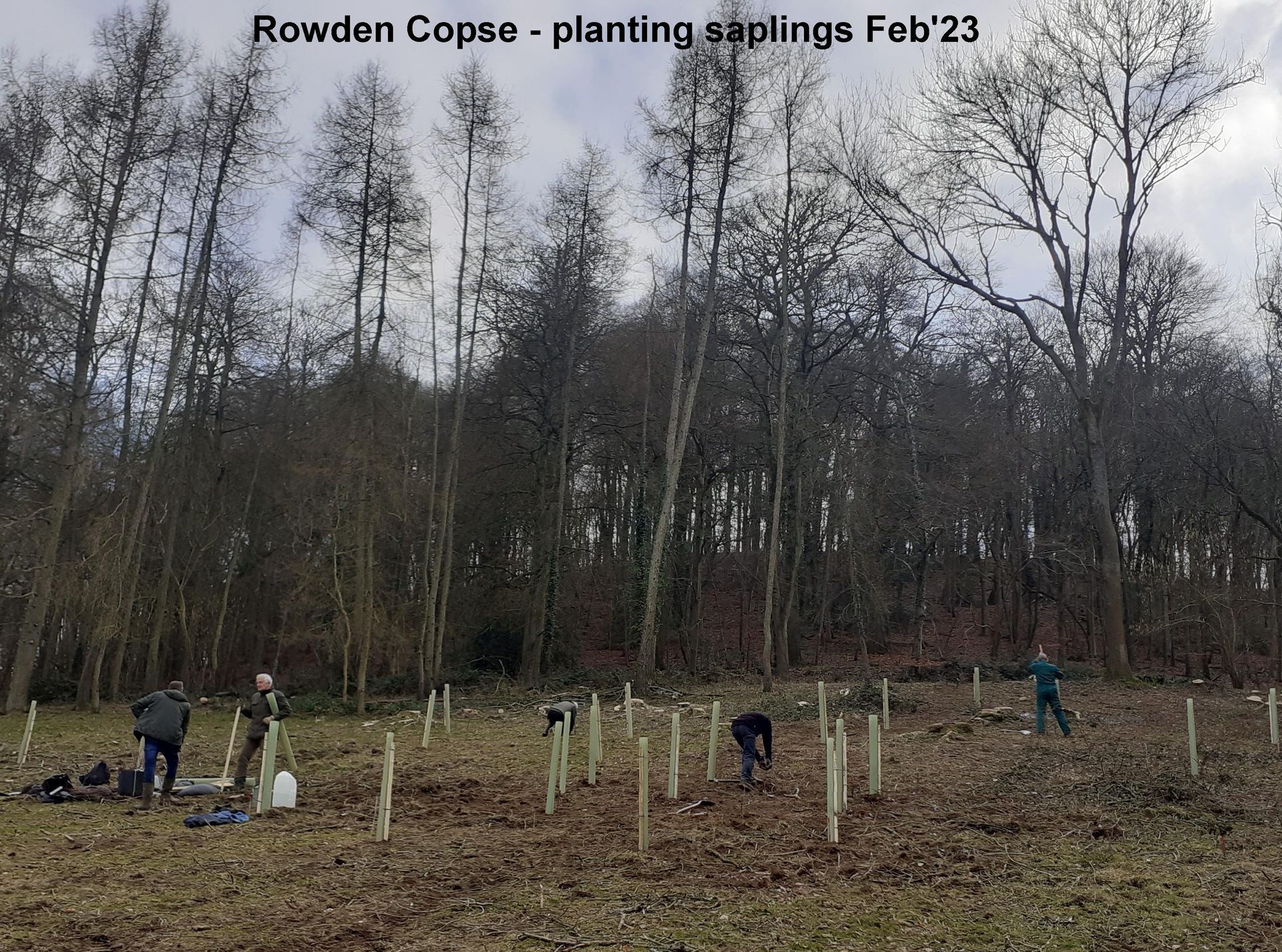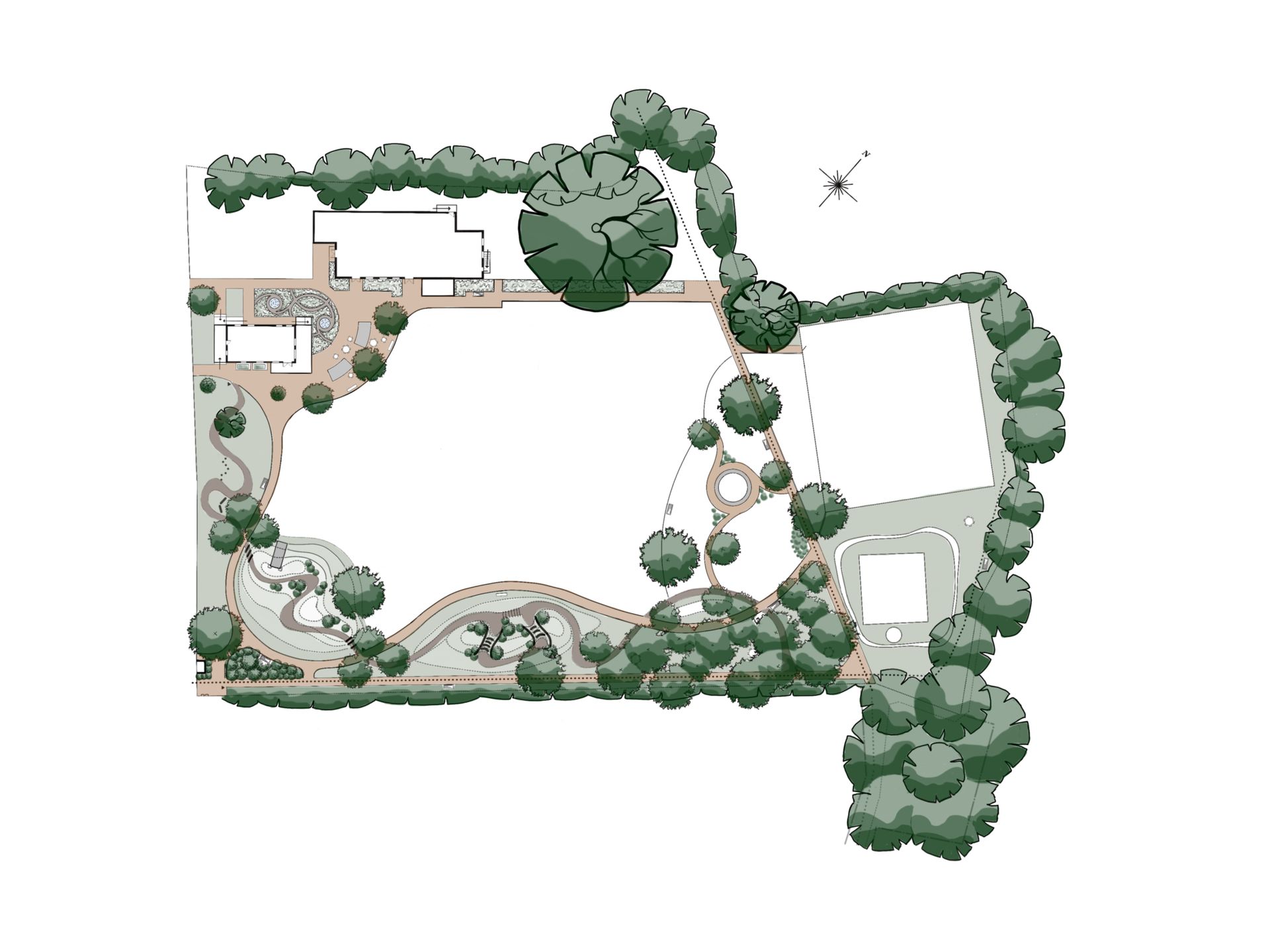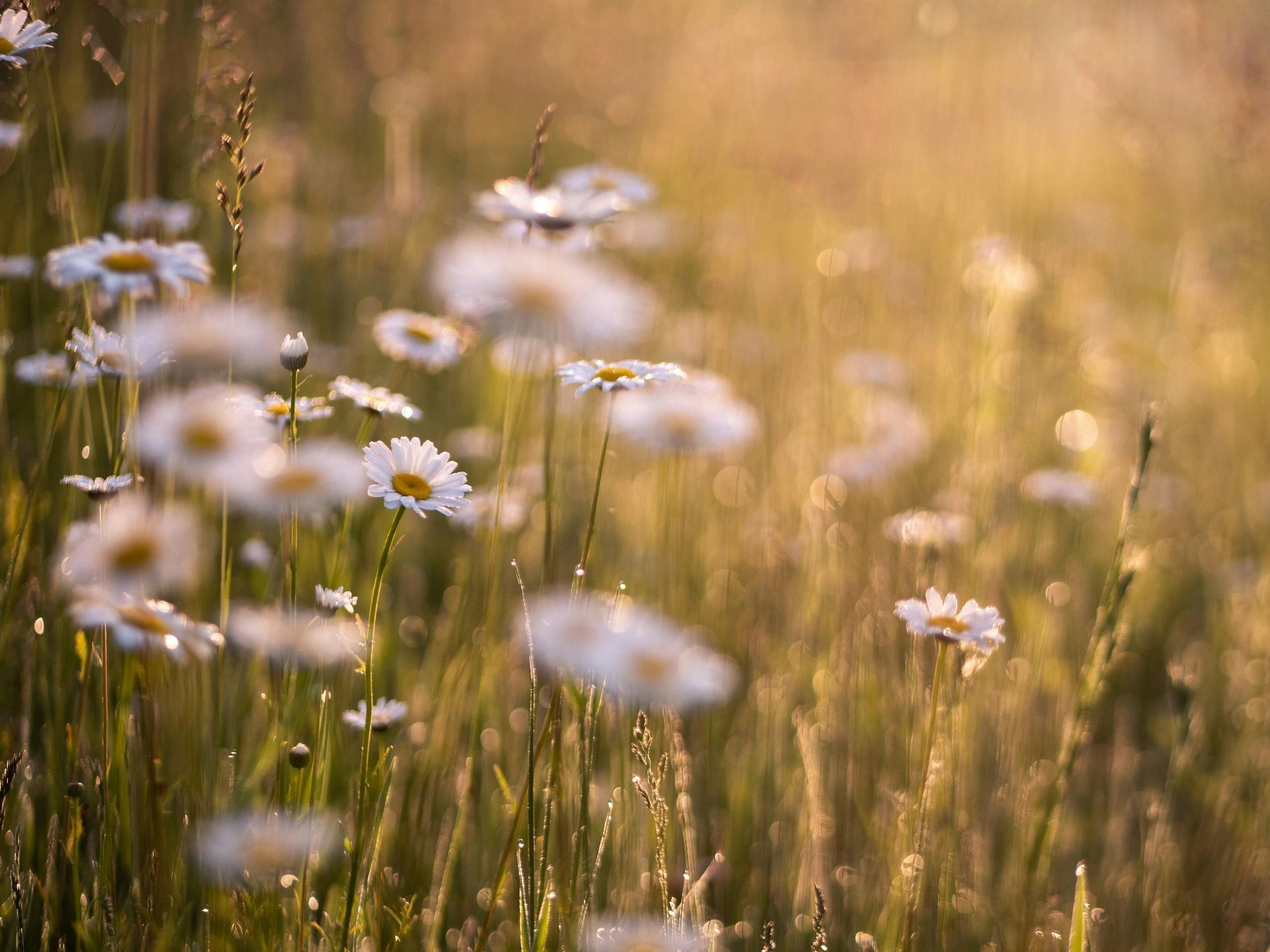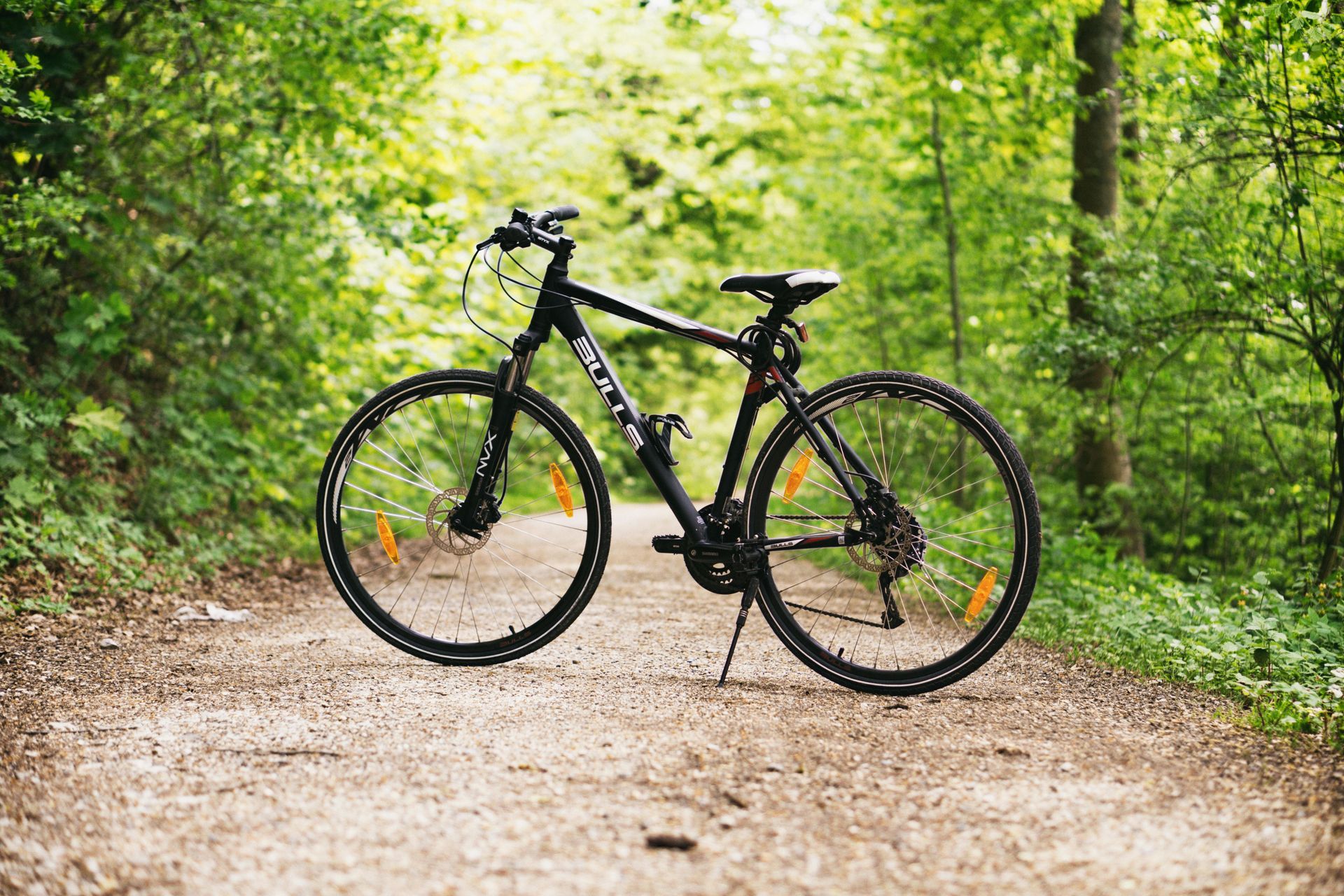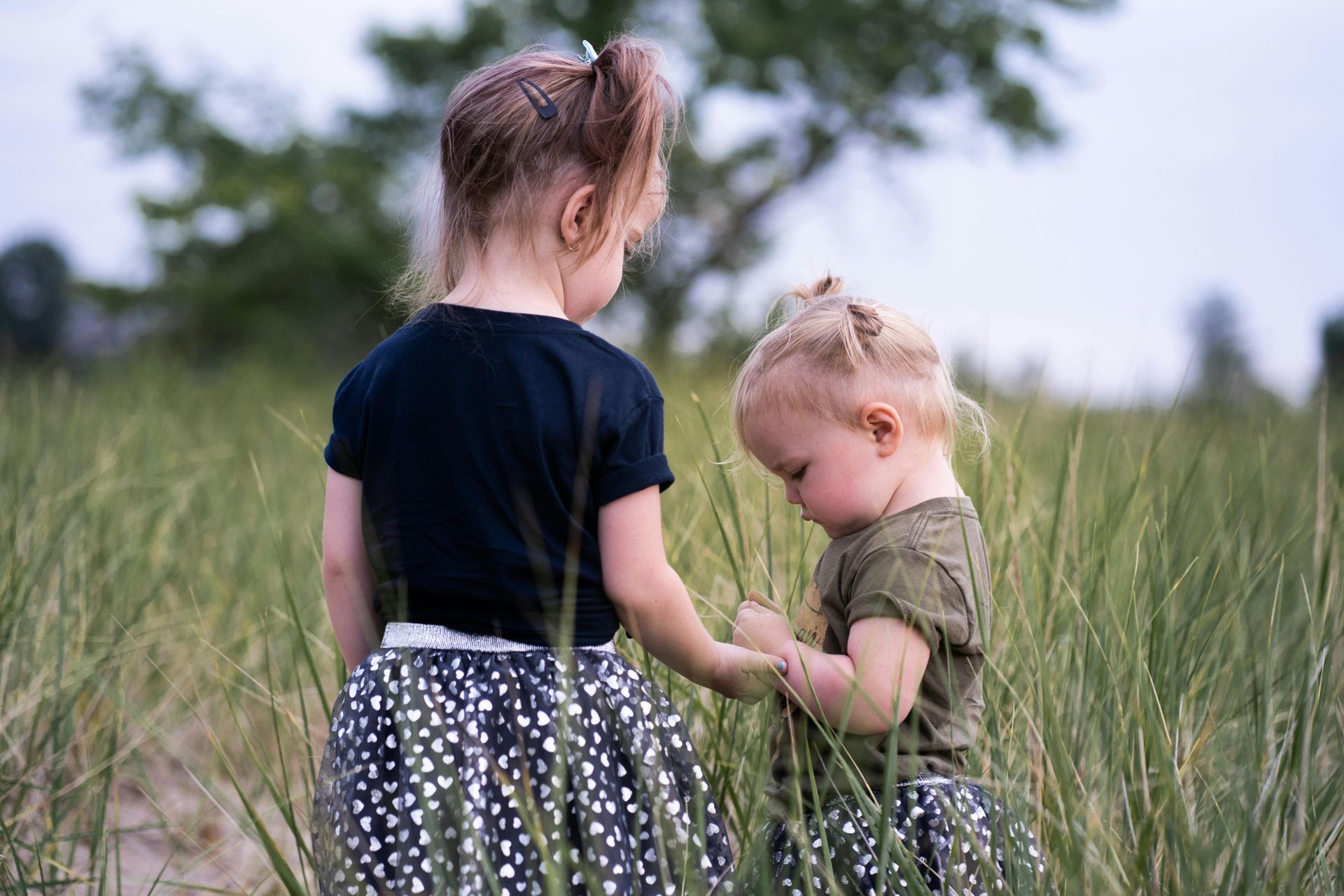SUPPORTING NATURE
Many of our projects aim to support our local environment, improve biodiversity and enhance our enjoyment of our beautiful villages
Tree Planting
Gloucester County Council has a project to plant 1 million trees in Gloucestershire by 2030.
They are looking for local volunteers to plant tree saplings in their local areas – the saplings plus advice are provided by GCC using funds from the Forestry Commission, and central government. The volunteers must commit to look after the saplings for five years after planting – protect from damage by animals and ensure sufficient water during dry periods, looking for 85% eventual survival.
CUCAN members identified several suitable sites for tree planting in Uley, applied for trees and supports from GCC and organised a group of volunteers to get them in the ground.
Rowden Copse
In February 2023, a group of volunteers planted 100 tree saplings in a field on Elcombe Farm in Uley; with the enthusiastic support of the farmer who owns the field. Some children from Uley School planted the first few.
Mill Farm and Blacknest
In January 2024 a group of volunteers planted 50 tree saplings in a space on Mill Farm between Uley and Dursley, and 50 in a space on Owlpen Manor Estate - with the support of the respective landowners. The species were Oak, Silver Birch, Sweet Chestnut and Black Alder.
-
Blacknest Copse after planting (2024)
ButtonThis is the text area for this paragraph. To change it, simply click and start typing.
-
Rowden Copse after 18 months
ButtonThis is the text area for this paragraph. To change it, simply click and start typing.
-
Planting Mill Farm Copse 2024
ButtonThis is the text area for this paragraph. To change it, simply click and start typing.
-
Mulching Rowden Copse March 2023
ButtonThis is the text area for this paragraph. To change it, simply click and start typing.
Violets on Cam Long Down and the Pearl Bordered Fritillary butterfly
In October '24 volunteers that included CUCAN members helped a project organised by ''Wild Dursley'' to plant 300 Violet plug plants on the south side of Cam Long Down.
The project is attempting to bring back the Pearl Bordered Fritillary butterfly (and associated insects) to the Down, which was abundant until about 1980 but then disappeared. The reason is thought to have been due to the disappearance of its favourite food plant, the common violet.
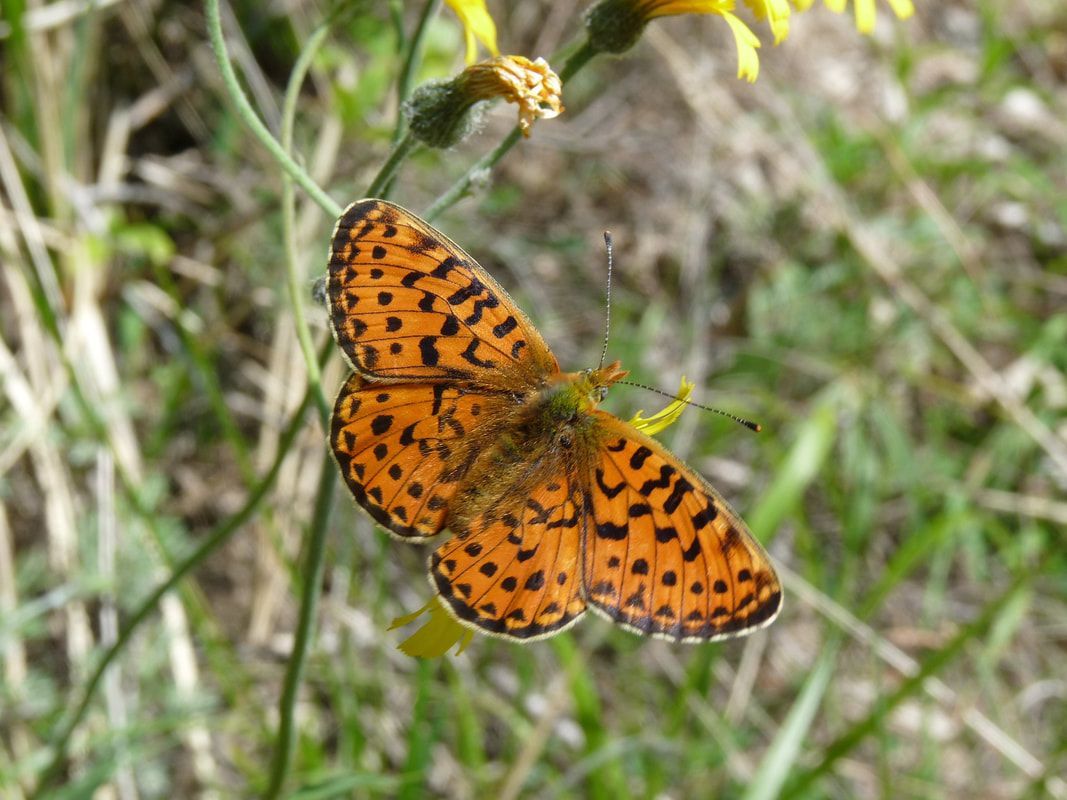
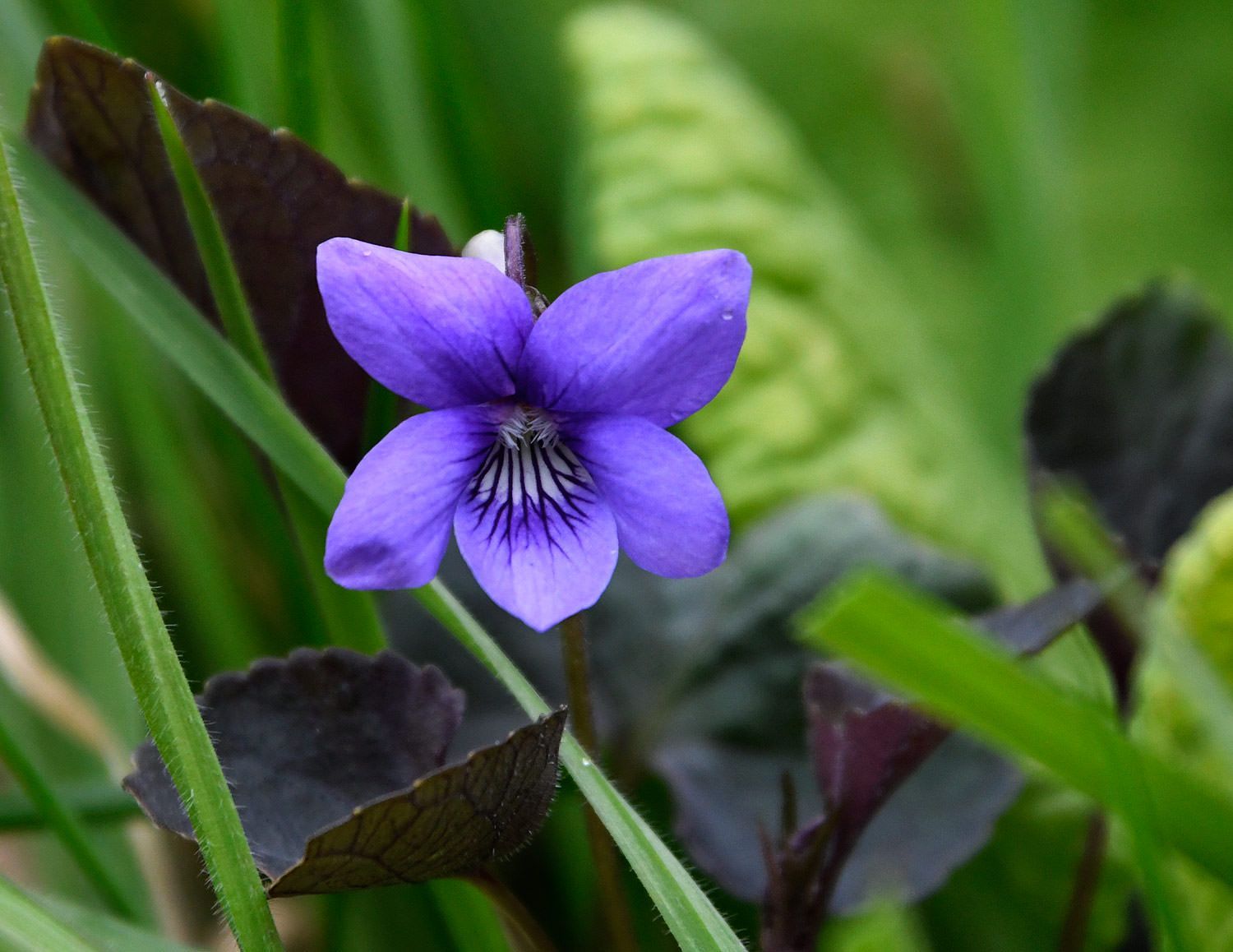
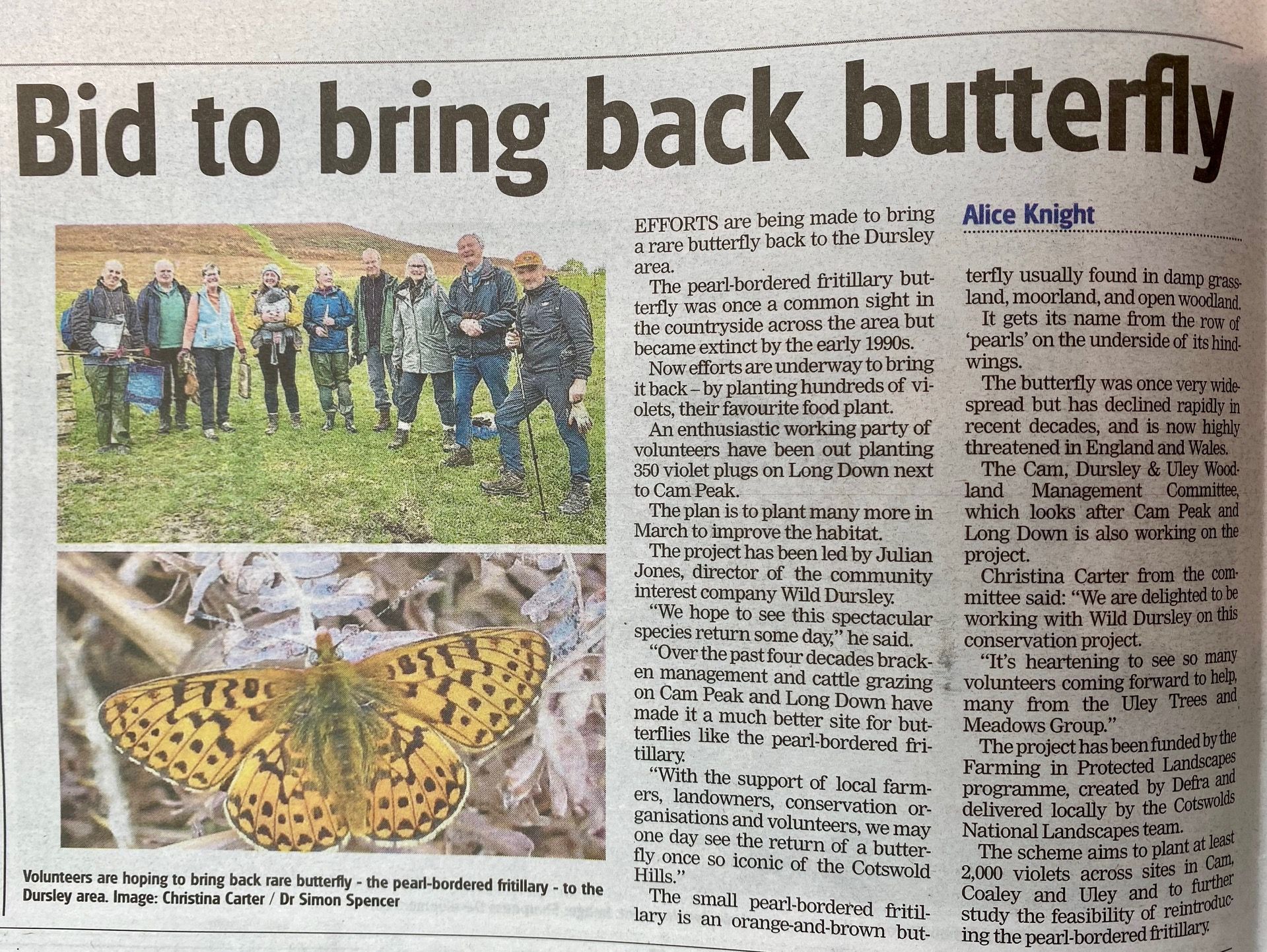
Biodiversity Islands, Corridors and Hedgerows
Wildflowers and Wildlife Corridors
Wild flowers compete more successfully with grass if the soil fertility is poor, so management that lowers the soil fertility results in more wild flowers. Insects are more successful if island patches of wild flowers are separated by short distances, or by wild habitat such as hedgerow, so there is a linking 'corridor' of nature.
In support of the Uley Parish Council Biodiversity Policy, adopted in February '24, four 'islands' have begun to be managed to promote the growth of wild flowers.
Two small patches are within the village, where nearby residents have volunteered to take responsibility for their management (consistent with pedestrians' safety, dogs fowling avoidance, and maintaining clear road visibility for vehicles):
1. Next to the Uley Shop
2. Above Sheeps Pool
Two larger areas, identified as ''unimproved limestone grassland'' by the ecologist from Cotswold Glorious Grasslands, Lorna Baggett, when she conducted a survey (so especially suitable for wild flowering):
3. The area known as Uley Common
4. The bank on the Millennium Green
(with the support of the Millennium Green Committee).
Uley Common
This small remnant of a once much larger Common is the triangular area next to the field just north of Hetty Pegler's Tump.
Uley Common has been brushcut by volunteers during several mornings in November '24, and the cuttings raked into a brash pile along one edge (which also becomes a useful habitat).
Millennium Green Bank
Lorna Baggett's report of the wildflower species she observed on this bank during her survey is here.
On a day in April '24 six volunteers brushcut a part of the bank, and then raked the cuttings off the area into brash pile lower down the field. Further brushcuts and raking have been done during December '24 and January '25.
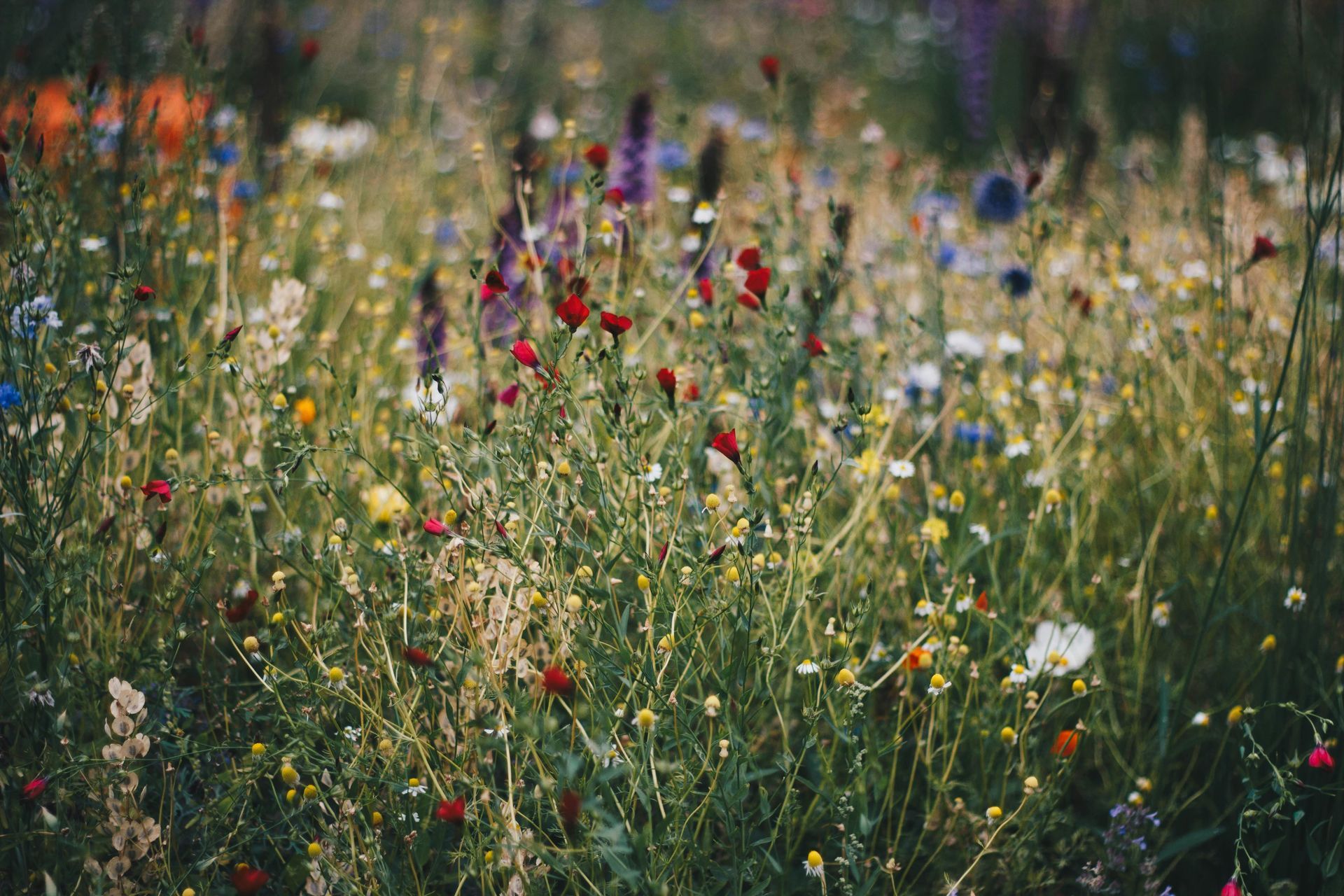
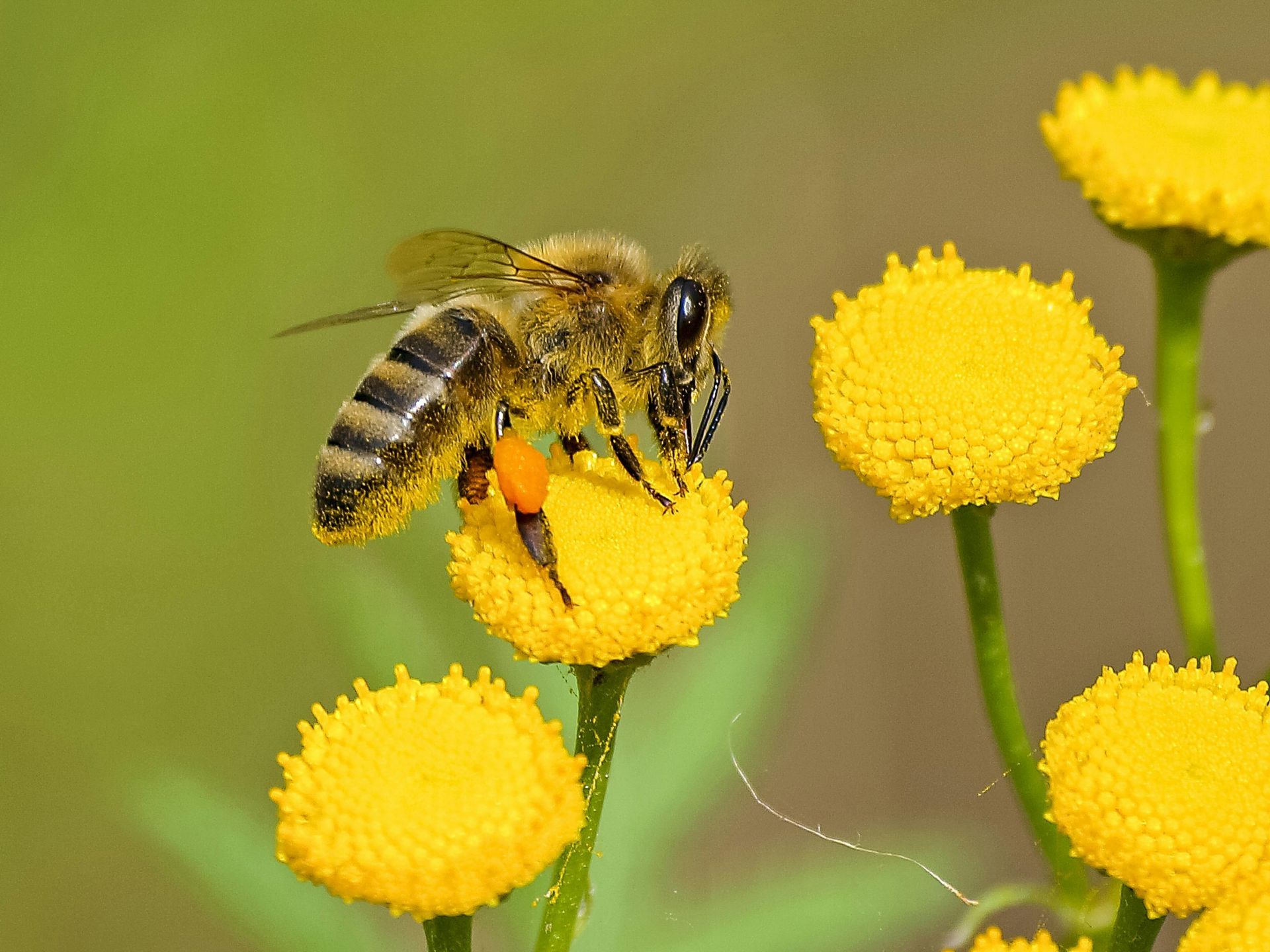
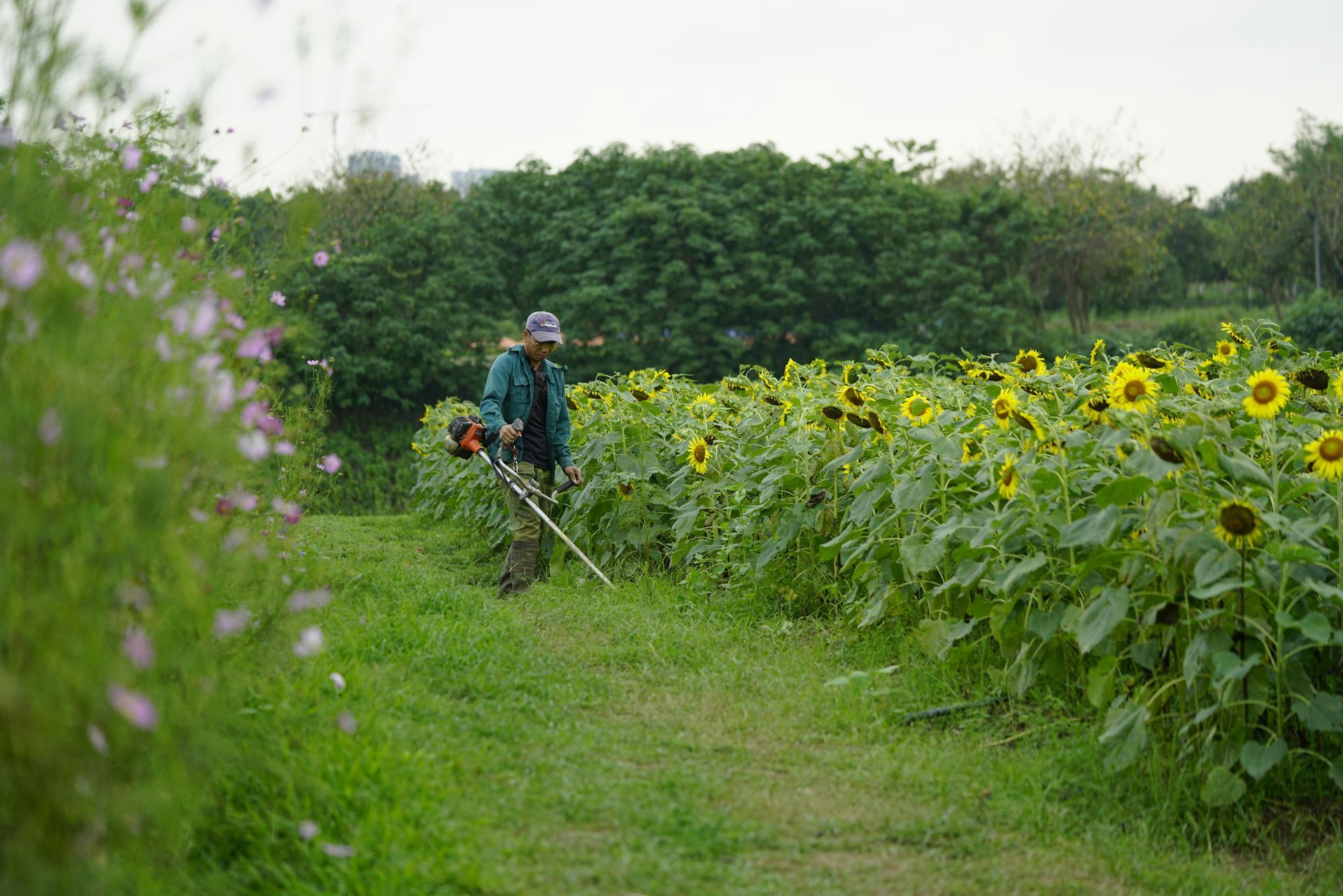
Nature Corridors Map
A map showing the areas in Uley that are being deliberately managed to support nature and the environment - wild flowers, trees, and the pollinators and other fauna that they support - is active. The Map shows where useful nature corridors already exist; and the gaps where the corridors need improvement.
Here
is a link to The Map.
Coloured to show who manages: Uley Trees & Meadows volunteers
Villagers
Others (eg Gloucestershire Wildlfe Trust)
One way to fill the gaps is for the community to contribute by making part of their gardens 'wildlife friendly'.
Is your garden Wildlife Friendly ?
Q1. Is there a part of your garden in which you actively try to encourage wildlife to thrive?
(This could be anything from a few square metres, to the entire garden, however large or small).
Q2. Do you try to limit how much weedkiller or pesticide you use in your garden?
Q3. Finally, how many of the following do you do?
O Mow the lawn less frequently and/or on a higher setting
O Do anything specifically to encourage pollinators
O Have a pond
O Regularly leave food out for birds/mammals
O Delay cutting back plants until after they have gone to seed
O Have a compost heap
O Improve the condition of your soil, or generally adopt organic approaches
O Grow wild flowers in part of the garden
O Encourage hedgehogs or other small mammals
O Leave dead wood in piles to provide shelter and food for insects
If you've answered Yes to Q1 and Q2, and have ticked at least 4 activities at Q3. you're a Wildlife Gardner!
If not, then give it a go - cutting out weedkiller entirely can be really tricky, but the more you cut back the more wildlife will flourish. And the more activities at Q3 you can do, the more wildlife will love you for it. It's not difficult to make it happen, and when you do, your garden will take on a new dimension!
Remember, one step at a time is all you need to do, and even the tiniest gardens will benefit from it.
Get the kids involved, and chat to your neighbours about what you're doing - that way, we can connect the village through wildlife.
If you would like your garden to be added to 'the Nature Corridors map' then send us an email (coaleyuleycan@gmail.com) and we will add your garden to The Map - and thank you.
Hedgerows
Hedges weakened by annual flail cutting revive and thicken up if they are laid manually by traditional methods. One Cucan volunteer attended a Tree Council online course during summer '24, and after it, a practical hedge-laying day. The Tree Council (the organisation that manages 'trees outside woodlands', in parallel with the Forestry Commission which manages 'trees within woodlands') has a national project to restore hedgerows. Thousands of miles of hedgerows have been lost since the end of WW2, and also weakened by annual flail-cutting. If restored and improved, they provide invaluable habitat for birds, small mammals, insects, and still smaller organisms - those creatures which have disappeared in such large numbers causing the nature loss crisis. Thriving hedges usually have borders either side of grass and wild flowers, which together with the hedge itself are excellent biodiverse habitat.
A useful local project could be to:
- do a local hedgerows baseline survey;
- replant hedgerows that have been lost (it is legal to plant a hedge where one can be shown on earlier maps to have existed before, but not otherwise);
- carry out traditional hedge-laying on weakened hedges or parts of hedges (which promotes low-level bushy growth from the ground up).
In the same way that three copses were planted by CUCAN volunteers in '23 and '24 (sourcing saplings and guards from Gloucester County Council) the hope is to plant some hedge during winter '24/25, and to strengthen by manual hedge-laying weakened sections of existing hedges.
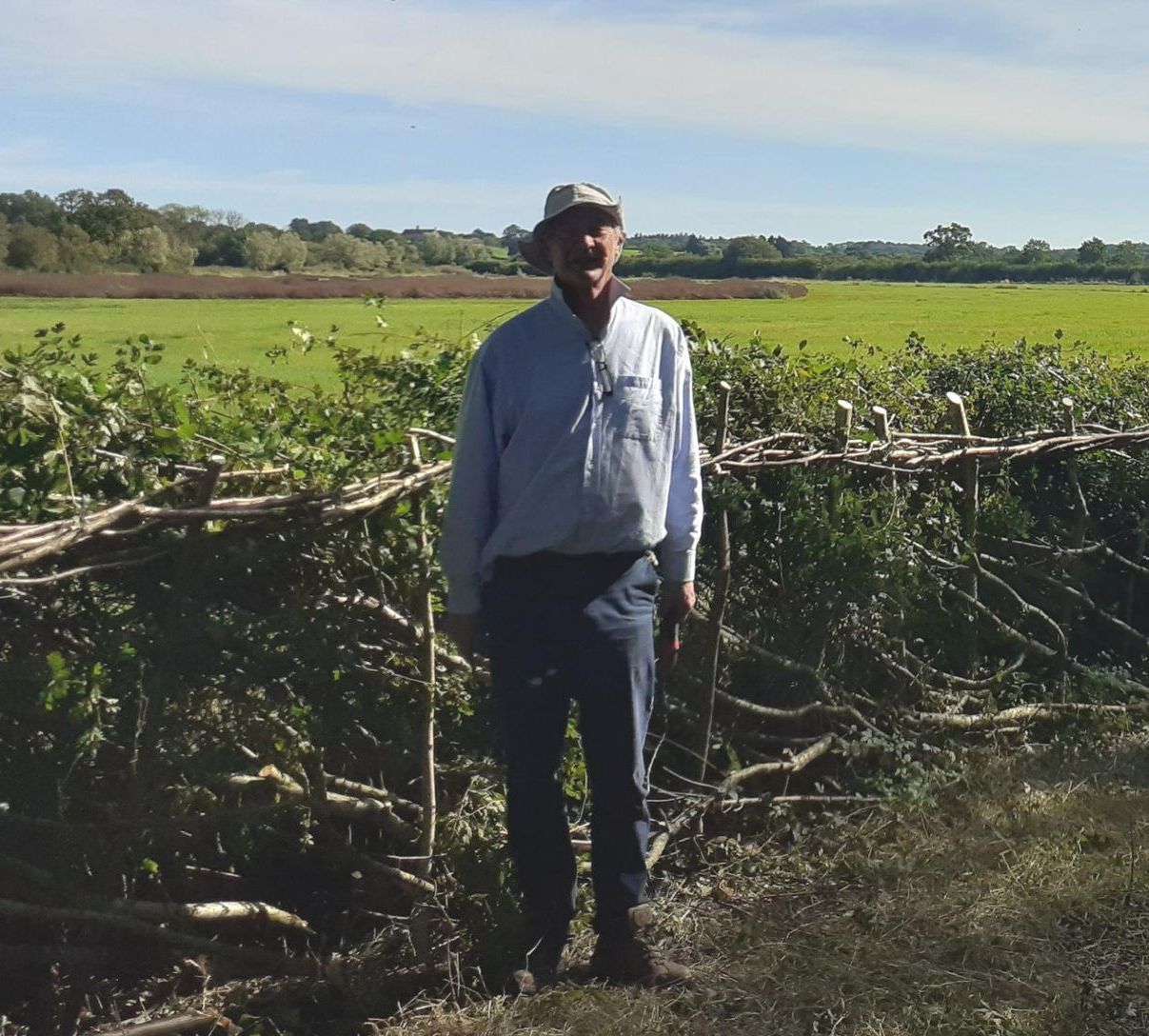
Coaley Recreation Ground Regeneration
CUCAN is soon to become more involved in an exciting project in Coaley!
The recreation ground in Coaley is entering a long phase of regeneration following extensive public consultation. This regeneration should provide a rich, natural environment where everyone can enjoy the outdoors, play freely and creatively with their peers and follow their interests. The aim is for a more naturalistic, wildlife-friendly space with more trees, wildlife-friendly planting, wildflower/meadow areas and improved habitat around the edges. More information about the project can be found here.

The plans have been drawn and fundraising has begun. In 2025, they are hoping to begin work on the children's playgrounds, perimeter paths and some of the wildlife areas. A CUCAN member has been heavily involved in the design and planning stage. CUCAN members have already helped with some pollinator friendly spring-bulb planting in autumn 2024 and will be involved in the planning and planting of the many new trees, wildflower meadows and border planting. We hope there will be many other opportunities for us to get involved elsewhere too.
